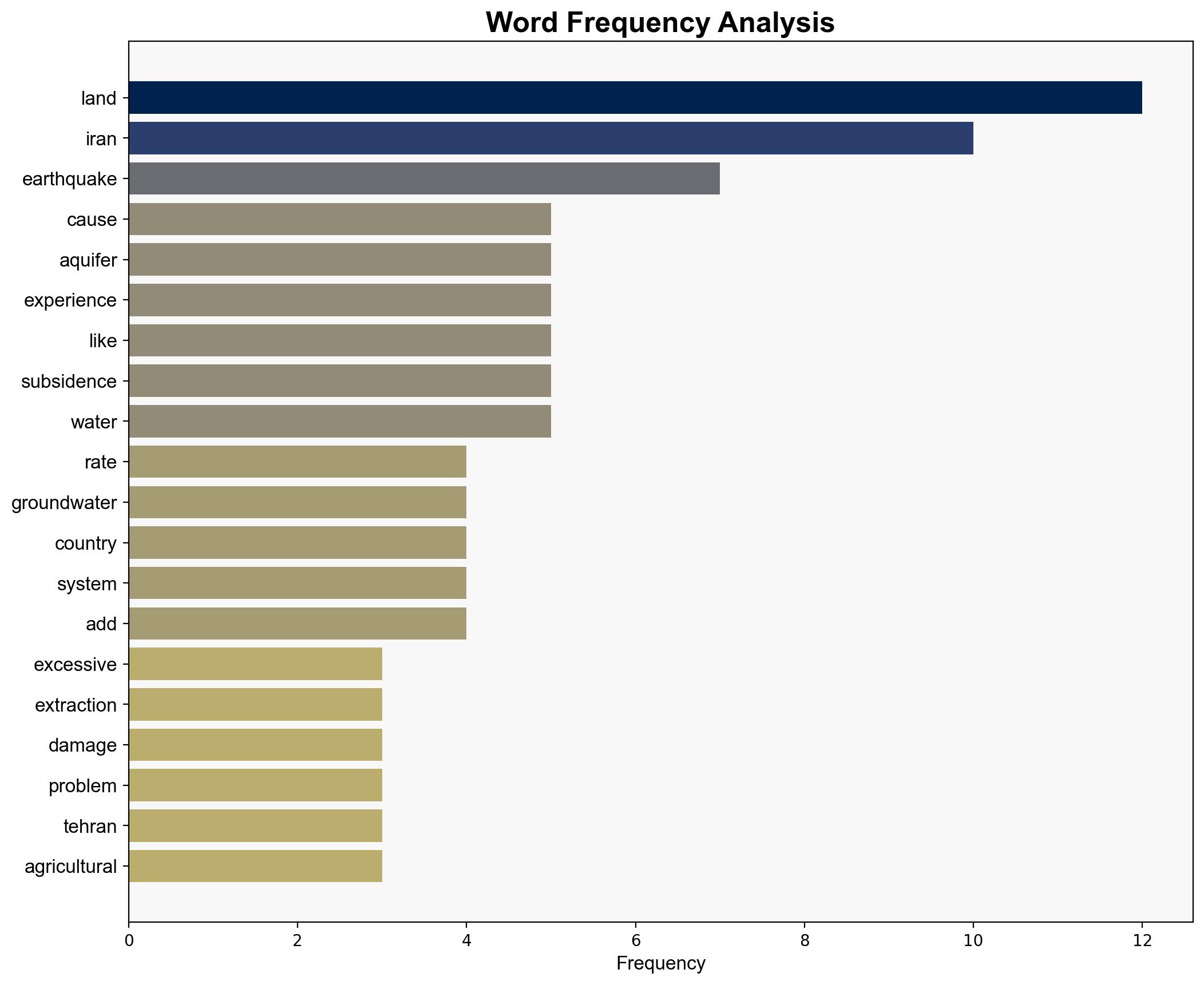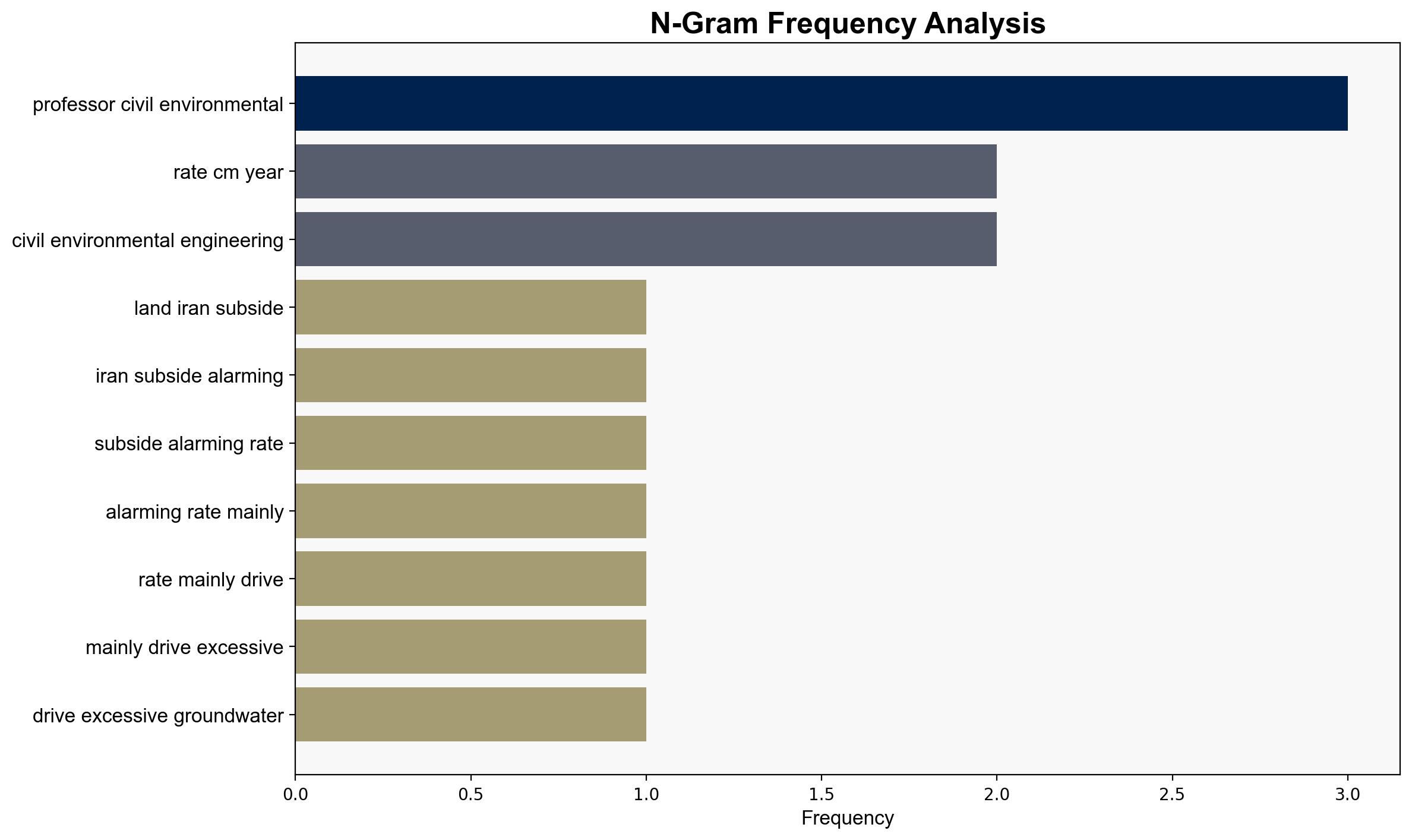Iran Faces Widespread Land Subsidence Amid Escalating Water Emergency – Forbes
Published on: 2025-04-19
Intelligence Report: Iran Faces Widespread Land Subsidence Amid Escalating Water Emergency – Forbes
1. BLUF (Bottom Line Up Front)
Iran is experiencing significant land subsidence due to excessive groundwater extraction, primarily for agricultural purposes. This environmental issue poses a severe threat to infrastructure and increases the risk of catastrophic damage in the event of an earthquake. Immediate strategic interventions are necessary to address water management and land subsidence to prevent further deterioration of critical infrastructure and mitigate potential disaster impacts.
2. Detailed Analysis
The following structured analytic techniques have been applied:
SWOT Analysis
Strengths: Iran’s strategic location and natural resources offer economic potential if managed sustainably.
Weaknesses: Over-reliance on groundwater for agriculture, inadequate regulatory frameworks, and insufficient disaster preparedness.
Opportunities: Implementation of sustainable water management practices and international cooperation for technological and environmental solutions.
Threats: Increased risk of infrastructure failure, potential for large-scale earthquakes, and socio-economic instability due to environmental degradation.
Cross-Impact Matrix
The land subsidence in Iran could influence neighboring regions by disrupting trade routes and causing regional economic instability. Additionally, environmental degradation may lead to increased migration pressures and potential geopolitical tensions over shared water resources.
Scenario Generation
Scenario 1: Continued inaction leads to widespread infrastructure collapse and heightened earthquake vulnerability, resulting in significant human and economic losses.
Scenario 2: Implementation of comprehensive water management reforms stabilizes subsidence rates, preserving infrastructure integrity and improving regional security.
Scenario 3: International collaboration on environmental technologies mitigates subsidence impacts, fostering regional cooperation and economic resilience.
3. Implications and Strategic Risks
The ongoing land subsidence poses significant risks to Iran’s infrastructure, including transportation systems and utilities. The potential for catastrophic damage in the event of an earthquake is heightened, threatening public safety and economic stability. The lack of visible immediate impact allows the issue to be underplayed, increasing the long-term vulnerability of the region.
4. Recommendations and Outlook
- Implement stringent water management policies to reduce groundwater extraction and promote sustainable agricultural practices.
- Enhance disaster preparedness and infrastructure resilience to mitigate earthquake impacts.
- Foster international partnerships for technological solutions to address environmental challenges.
- Develop public awareness campaigns to highlight the urgency of the subsidence issue and garner support for policy changes.
- Scenario-based projections suggest that proactive measures could stabilize the situation within the next decade, reducing risks and enhancing regional security.
5. Key Individuals and Entities
Nik Kowsar, Amir Aghakuchak, Shideh Dashti, Farshid Vahedifard.





